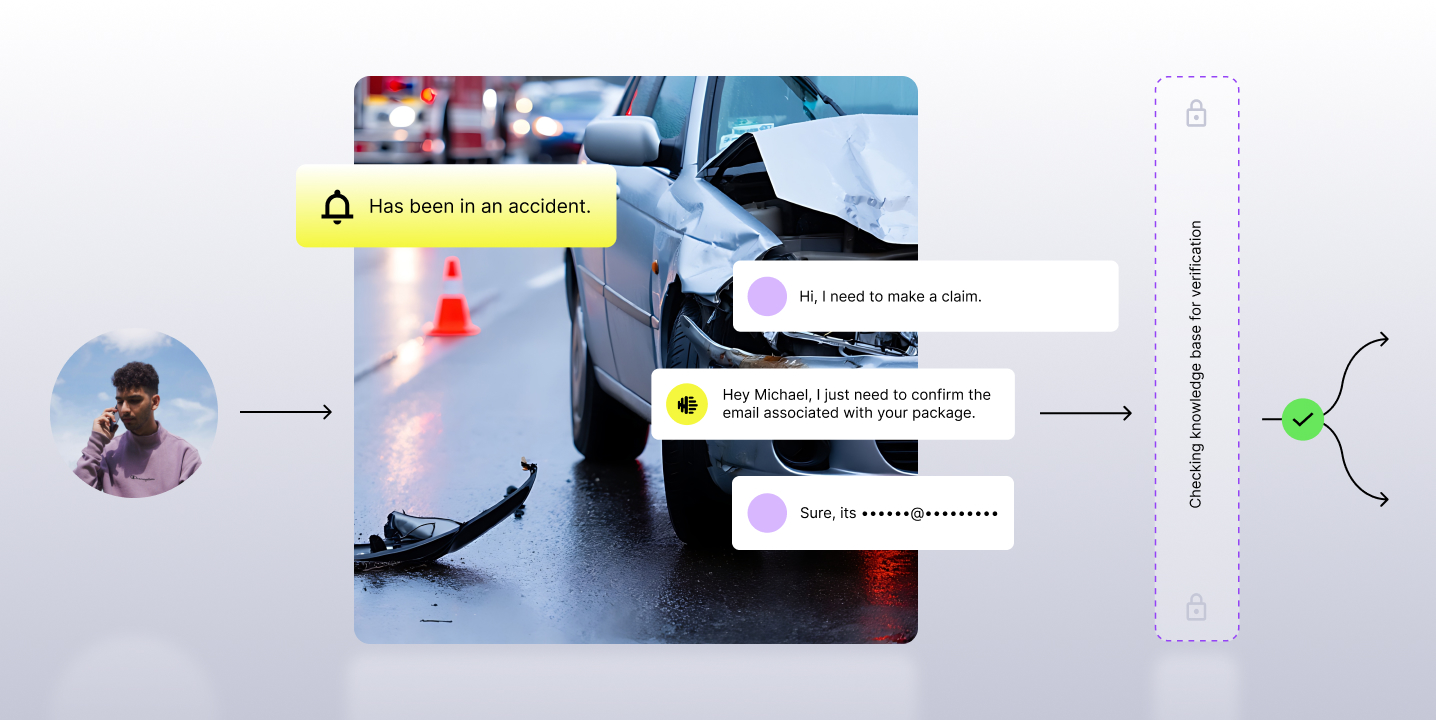Over the past 18 months, remote work and an increased reliance on connected technology has transformed traditional business operations. Companies across virtually every industry had to move quickly to adapt, yet many of the innovative strategies they implemented in 2020 are here to stay.
We wanted to understand the short and long-term impact that this shift had on contact centers and agents, who serve the very core of every business: its customers.
In a survey of 251 U.S. contact center leaders across industries and sizes, we learned how pandemic-driven changes have shaped their current operations and plans for the future. Our comprehensive findings are explained in our 2021 Post-Pandemic Contact Center Report, which also highlights what contact centers are doing to remain resilient.
One key opportunity to build this resilience? Quality management. Contact center quality management encompasses quality assurance, compliance and coaching workflows. Together, these processes enable leaders to assess agent-customer interactions and use that data to scale high-quality customer experiences.
Though digital transformation has improved these processes for contact centers over the past several years, our survey revealed that doubling down on intelligence and automation technology can help agents perform at their best.
We’ve compiled these findings in the 13 statistics in this article, that in the end paint a clearer picture of what the post-pandemic contact center will look like.
Report Highlights
- More than half of contact centers use analytics to measure the core elements of QM: quality assurance, compliance, agent performance and coaching. The highest utilization is QA (68%), while 53% use analytics to ensure compliance.
- The vast majority (87%) currently experience difficulty ensuring quality assurance and struggle with maintaining compliance (77%) in a remote setting, highlighting opportunities for improvement.
- The vast majority (85%) of contact centers are looking to add or replace their quality assurance automation technology.
- To provide more guidance to agents, 58% of leaders are engaging agents in more regular conversations and 57% are prioritizing more personalized coaching and support.
Operations and Technology Overview
The COVID-19 pandemic drove contact centers to transform how they operate, including shifting to remote work and increasing their reliance on technology. As a result of these challenging times, contact center leaders are recognizing a key area of opportunity to better leverage technology and maintain excellence: quality management (QM).
Quality management is an umbrella term that encompasses three pillars: quality assurance, compliance and coaching. In practice, quality management entails analyzing data across each of these categories to assess agent-customer interactions with the ultimate goal of scaling high-quality customer experiences.
Though contact centers have slowly been digitizing and transforming workflows across areas of quality management, there’s more work to be done. By injecting intelligence and automation into quality management, contact centers can identify the right customer interactions to review, increase the rate of evaluation and improve agent coaching based on more accurate data. As a result, contact centers can operate more efficiently, yielding happier agents and customers.
1. Most contact center leaders feel optimistic about their business
While many businesses struggled with the sudden change to remote work, contact centers across industries and sizes have kept a positive outlook. 85% are optimistic their contact center will become a revenue driver versus a cost center in the future.

2. The majority of contact centers now operate on hybrid models
As it stands, 63% of contact centers currently operate on a hybrid model, with some agents working in the office and others working remotely. But even as vaccination rates increase, hybrid work models are here to stay—54% say they will continue operating on a hybrid model now that the COVID-19 vaccine has become widely available, too.
As a result, leaders will have to ensure their remote operations are set up for long-term success.

3. Remote workforces are surfacing new QM challenges
Maintaining hybrid work models will require leaders to overcome the challenges to QM processes that remote work presents. 87% currently experience difficulty ensuring quality assurance and 77% struggle with maintaining compliance in a remote setting, highlighting opportunities for improvement.

4. Compliance technology needs improvement for remote operations and workforces
Ensuring that agents properly follow compliance protocols, including customer verification and disclosures, is a vital element of quality management. Existing technology can help, but some contact center leaders are concerned about its effectiveness when agents work from home.
While the majority (68%) are extremely satisfied with their compliance technology, opinions differ regarding its current ability to ensure compliance in a remote setting. Roughly 30% say it’s much more challenging to ensure compliance remotely. And 45% believe it’s somewhat more challenging.

5. Contact centers need fresh talent to drive QM improvements
In addition to improving quality management through technology, leaders are also looking to bring on talent to support operations.
Demand is highest within quality assurance, a core pillar of QM that includes identifying, evaluating and reporting customer interactions for quality. 25% of contact centers are hiring QA roles this year.

There’s an even greater need for QA professionals at contact centers with ~200 employees. Nearly half will need to fill a role this year.
Analytics and AI Adoption
At its core, quality management relies on data. As teams remain partially dispersed due to long-term hybrid work models, contact centers need more insight than ever into quality assurance, compliance and agent performance. Leaders rely on this data to ensure operations are running effectively, and use it to evolve coaching practices to develop agents.
6. Contact centers are increasingly integrating AI technologies to improve QM process
Many contact centers already utilize AI technology to bolster QM processes. Agent analytics (45%) and quality assurance automation (41%) are some of the highest use-cases. Leaders also use AI technology for real-time voice transcription (29%), sentiment analysis (23%) and natural language processing (19%).

Meanwhile, those who haven’t yet added AI technology to their QM processes, or currently have technology that needs replacing, are looking to adopt. Leaders have the highest need to add or replace quality assurance automation and natural language processing technologies.

7. Agent analytics and interaction analytics have surged in adoption
Understanding the agent experience is critical for optimizing coaching, and, ultimately, optimizing customer experience as well. As a result, 35% of contact centers are investing in agent analytics, which is the most prioritized area for adoption. Interaction analytics closely follows, with 27% currently investing.

8. Agent performance analytics is the key to improving QM processes
Currently, more than half of contact centers use analytics to measure the core elements of QM: quality assurance, compliance, agent performance and coaching. The highest utilization is QA (68%), while 53% use analytics to ensure compliance. Meanwhile, analytics also play a crucial role in assessing customer experience (59%) and agent performance (55%), which ultimately funnel into and inform coaching.

Contact centers plan to continue using analytics across all categories in the future, but especially within quality assurance operations (61%) and customer experience (61%), where expected use is the highest.

The growing need for coaching
High-quality customer experiences, the ultimate goal of QM processes, largely depend on the agent's ability to perform at their best. More agents are looking for increased support, and to meet demand, contact centers are putting more resources into coaching workflows.
9. Agents are proactively seeking more feedback from management
When contact centers pivoted to remote work, in-person agent training was no longer an option. As a result, 50% of contact center leaders noticed agents were looking for more guidance from management compared to last year. Without as much in-person learning, leaders turned to technology to support their workforce.

10. Coaching is getting more targeted and personalized, driven by AI
To provide more guidance, 58% of leaders are engaging agents in more regular conversations and 57% are prioritizing more personalized coaching and support. The majority of teams are using AI to automate workflows and improve productivity and experience as well.

11. Leaders are improving KPIs through agent coaching
Customer satisfaction score and average handling time are the two most important KPIs for contact centers. Nearly half (48%) of contact centers rank reducing customer frustration as their highest priority, and 38% are looking to improve customer satisfaction. Leaders plan to improve each of these KPIs through agent coaching.

12. AI and realtime will continue to drive QM innovation and maturity
As contact centers prepare for the future, 60% predict keeping up with rapidly advancing technology will be their top challenge. Leaders also believe adding new channels to their omnichannel strategy will require significant attention.
Both efforts are critical for maintaining high-quality customer experience at scale, but with continued optimism and willingness to adopt new technology, contact centers can continue to transform QM processes that drive success.

Looking for more on what’s next?
Contact center leaders will continue to innovate as technology evolves at a rapid pace. By embracing powerful emerging tools, leaders can continue to improve their QM processes and achieve high-quality customer experiences.
For more insights on contact center quality management, including trends in technology and operations, analytics and AI adoption and the growing need for coaching, read the full report here.

















